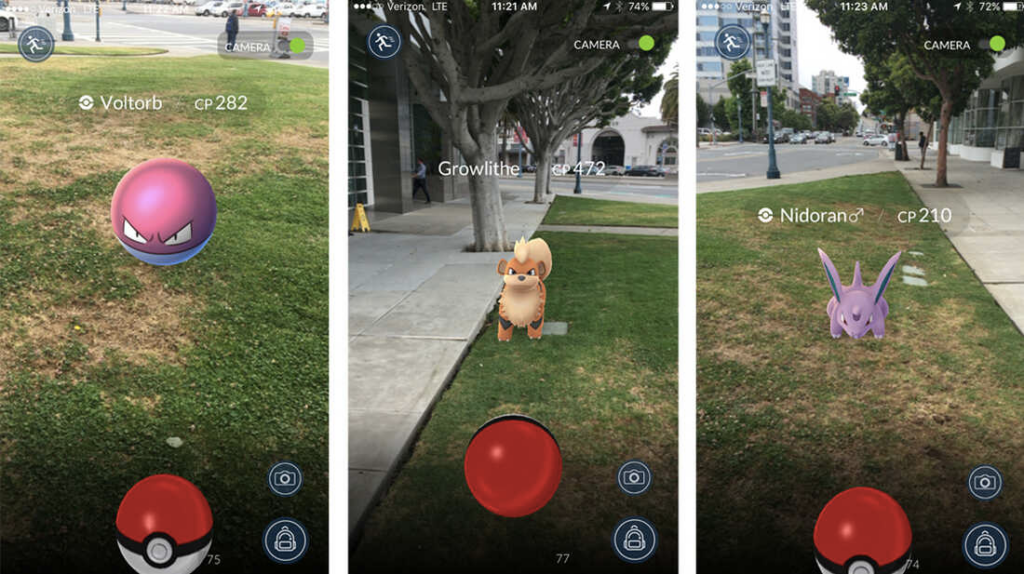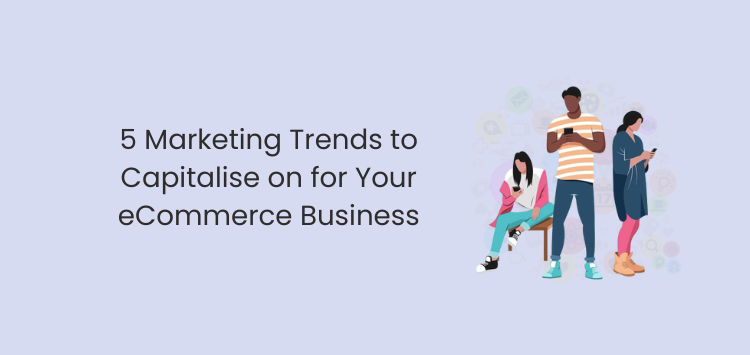Marketing trends have been on the rise for as long as most of us can remember. While it’s no longer TV commercials and print ads like we had in the 90s, we’ve seen newcomers in the field that are set to change the course of history.
Why should you care? It’s simple – the success of your business in today’s cutthroat market depends on your ability to innovate and adapt accordingly to the changing times while keeping your focus on the values that your business is built on.
The global e-commerce market was valued at $9.9 trillion in 2022 and is expected to increase in the coming years. Those numbers hold promise for your e-commerce business. It’s a testament to the relevance of your business and thousands of others in today’s global market. So you should consider taking advantage of new marketing trends to keep just more than the lights running in your business.
In the next few paragraphs, we’ll show you which marketing trends are making waves in the industry and how you can apply them to your business.
Using Micro-Influencers for Marketing Campaigns
Whatever your thoughts may be about the influencer industry, you can’t deny the impact that an influencer can have on generating clicks, follows, brand mentions and even sales for businesses.
Micro-influencers typically have a more engaged and focused audience – think of it as a few thousand people who are most likely to be influenced into buying your product.
They’re more affordable than their mega counterparts when you factor in the rates for influencing. You would be spending less on a micro-influencer for more impact on impressions.
Consumers trust influencer recommendations when compared to brand-produced content.
With this knowledge, how can you capitalize on this marketing trend in 2023? Here are some tips to keep in mind:
- Research and come up with relevant content that your target audience is interested in.
- Find micro-influencers that have a genuine interest in your industry and can relate to your target audience.
- Check their engagement rates by assessing the number of likes, comments, and shares they receive on their posts.
- Reach out to several micro-influencers in your niche and industry with your proposal
- Collaborate on content creation and agree on defined terms
- Foster long-term relationships with these influencers to establish credibility with their audience.
Augmented Reality (AR) and Virtual Reality (VR)
Augmented Reality (AR) and Virtual Reality (VR) are two technologies that have catapulted marketing to new heights in the past few years.
AR refers to technology that adds virtual objects into our real-world environment usually through a smartphone or special AR glasses. On the other hand, VR immerses users into a virtual reality, that is generated by a computer, allowing them to experience a different world entirely with the help of special headsets.Virtual reality statistics show that the global market size of AR and VR is forecast to hit $296.9 billion in 2024.
Virtual reality statistics show that the global market size of AR and VR is forecast to hit $296.9 billion in 2024.

Image source: npr.org
If you recall the #PokemonGo challenge that had people searching through streets, cafes, and buildings for a fictional character, then you’ve experienced the true impact of augmented reality.
Similarly, a growing number of e-commerce retailers are embracing virtual reality’s potential to revolutionize the customer experience in the US and UK.
While this technology may be relatively expensive for small businesses, its adoption is worth considering for businesses with a global presence or international focus.

Source: Ikea.com
A great example of this is Ikea Place, a VR-based app that allows users to virtually place 3D models of fixtures and furniture in their own homes.
Video Content
The popularity of video content grew significantly during the pandemic and hasn’t stopped growing since.
With the introduction of video content on platforms like TikTok, Instagram, Youtube and Facebook, its popularity has skyrocketed among individuals, brands and even governments.
The use of video in marketing is a trend that will continue to rise in the future as 91% of consumers say they want to see online video content from brands. For marketers alike, video has become a trusted potential for growing a business.
While incorporating video into your marketing strategy for e-commerce might be great, it is important to capitalize on short-form video content, as it’s been proven to be more engaging and effective.

Image source: Tiktok
TikTok’s popularity was largely driven by the performance of short-form video content which was consumed in a few minutes.
Here are some tips for integrating video content into your marketing strategy:
- Utilise short-form videos in your marketing. Make it relatable and brand-centric.
- Outsource your video content editing needs to save time and costs.
- Share behind-the-scenes footage of your work processes, and day-to-day or employee activity to boost loyalty and trust for your brand.
- Hop on trends and social media challenges to increase brand awareness
Gamified Content
This marketing trend is one that has remained relevant for a long time. Brands that go beyond offering services to create engaging and fun interactions for their customers while they shop, work out, or read have seen immense growth and rewards.
Gamified content can be applied in a number of ways to boost ROI on marketing campaigns. Here are some tactics you can apply to your e-commerce business:
Gamified Popups
Popups are a great way to get the attention of your website visitors while they browse through your ecommerce store. But you can make your popups even better by adding gamified content.
Using a gamified popup on your website with a CTA and lead magnet that offers your customers a reward, discount or perk not only increases your chances of generating leads but also improves their customer experience.
Gamified Advertising
Skip the singular message on your marketing ads and add some interactive quiz, contest, or challenge that gets your customers to participate.
Whether you choose to do this online or in a brick-and-mortar store, your customers will appreciate the experience.
Gamified Apps
Let’s say you run an e-commerce store and recently launched a mobile app for customers to shop from. Whenever they make a purchase within the app, they accumulate points – which are tracked – that can be redeemed as a voucher, gift card or discounted item.
Using Social Media as a Tool for Customer Service
The practice of using social media as a tool to resolve complaints and queries is one that isn’t new to the industry. In fact, more brands and businesses are using social platforms to build loyalty and trust with their customers.
Customers can contact companies from the convenience of their own devices through social media platforms like Twitter, Facebook, Instagram, and LinkedIn. This convenience removes the need for more time-consuming and potentially frustrating ways of communication, such as phone conversations or emails.
However, social media isn’t the only convenient way for customers to connect. Live chat offers an additional option for on-site support, allowing customers to get immediate assistance directly from your website without ever leaving the page. This convenience removes the need for more time-consuming and potentially frustrating ways of communication, such as phone conversations or emails.

Image source: Twitter.com
Businesses can also quickly respond to client concerns on social media. Customers are happy to share their appreciation and gratitude online when their issues are resolved quickly through social media.
In turn, businesses can utilise this feedback to increase brand perception, recall and loyalty with new customers and existing ones.
Here are some tips to keep in mind when using social media as a tool for customer service
- Be prompt, empathetic and courteous in your responses.
- Monitor brand mentions across social channels
- Personalize your customer’s experience. Address them by their names and provide answers to specific questions.
- Respond to all kinds of reviews, whether positive or negative.
- Use canned responses and pre-approved templates for delivering accurate responses
- Respond to public complaints and comments quickly and efficiently.
- Use customer feedback to improve your strategies
Conclusion
Staying ahead of marketing trends is crucial for the success of any eCommerce business. The ever-evolving digital landscape presents both challenges and opportunities and by capitalizing on these marketing trends, businesses can gain a competitive edge and maximize their growth potential.









